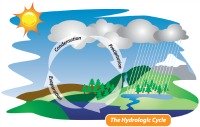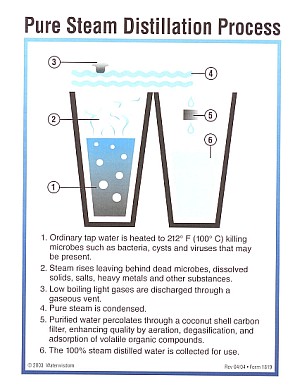What is in Bottled Water
What is in bottled water? A very good question, since the bottled water industry is a multi-billion dollar industry and is unregulated the answer can be difficult to determine.
Past inspections have shown mild to severe bacteria counts with trace amounts of inorganic minerals. On this page you will learn about:
|
  |
Mineral and Spring Water
Mineral water usually comes from an underground spring or artesian well and can have many different minerals such as calcium, magnesium, potassium, silica, bicarbonates, arsenic and sodium, in some cases higher than the EPA’s standard.
These minerals are inorganic and cannot be absorbed by the body; fruit tree’s and vegetable plants send their roots down into the earth to absorb these minerals. When consumed these now organic minerals are absorbed into the body building strong healthy cells and a happy healthy body.
Non-Source Water
Non-source water is just what it sounds like and is not usually drawn from a well, spring or glaziers; most of this type of water comes from municipal water supplies.
If you request a report from a water bottle company, to find out what is in bottled water and depending on how it was edited. You will find trace elements of minerals like, Fluoride, Chloride, Sodium, Aluminum, Nitrates, Iron, Hardness, Lead, Arsenic, Mercury, Sulfates and TDS (Total Dissolved Solids)
The list may also contain elements like Bacteria, Sodium Phosphates, Foaming Agents, Odor, Color, PH (Acidity) Turbidity (Cloudiness of Water) Pesticides, VOCs (Volatile Organic Compounds) and THMs (trihalomethanes)
Water Bottle Labels
What is in bottled water is not on the label, what is presented on the labels can be very misleading. For example a company may call their water; xyz SPRING Water Co, because SPRING is the largest word people tend to think it is spring water or xyz GLACIAL Water Co or a picture of a glacier with a polar bear.
All these creative labels are designed to mislead consumers into thinking the water is something it is not.
Water Filtration
What is in bottled water depends on how the company has filtered and treated the water. Water treatment can range from:
|
Charcoal filters; improve taste, remove Chlorine, Pesticides VOCs and THMs. Reverse Osmosis; a series of filters and membranes to filter out Minerals, Pesticides VOCs, THMs, and works well with charcoal filters. Does a poor job of removing Bacteria and Viruses. |
 |
Ozone, Ultra Violet Light: Kills Bacteria and Viruses and is used to purify the water.
|
Steam Distilled Water; Kills Bacteria, Viruses, almost all Minerals, steam distilled water removes 99% impurities when combined with Charcoal filtration. For more information on steam-distilled water go to distilled water page. For Information on Distillers for Home Use, Go To:
Waterwise Steam-Distilled Systems
|
Click Image to Increase Size
|
Plastic Bottles and Containers
Bottled water usually comes in plastic bottles and containers, which creates its own problems; you should only buy bottled water in rigid polycarbonate rigid plastic containers with the number 7 in the triangle and is used for 5-gallon containers and baby bottles.
Do not buy water in HDPE containers a flaccid opaque bottle with the number 2 in the triangle; it will leach plastic into the water.
Also what happens to all the billions of empty plastic bottles generated each year of which only a small percentage are recycled.
Plastic the man made wonder material of the modern age does not break down and decompose like everything else in nature, plastic creates a huge waste problem for this planet.
Healthier and Greener Alternatives Go To:
|
Healthier Body and Greener Planet at Waterwise
Two Free Books Mailed To You
|
  |

Contact Us For More Information
Home << Bottled Water Vs Tap Water << What is in Bottled Water

